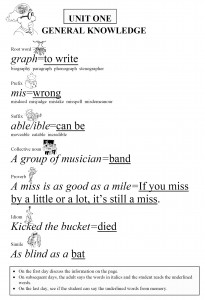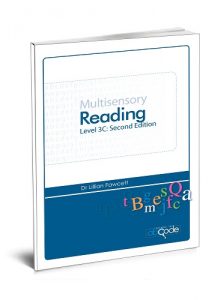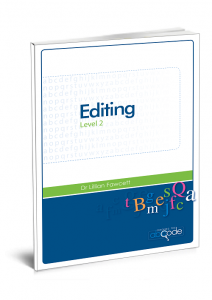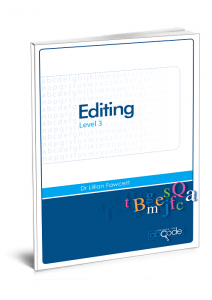Sample of the General Knowledge section: Multisensory Reading Program Level 3
The General Knowledge section provides the knowledge required for Stage 3 literacy development outlined in Frith’s (as cited in Heath, Hogben, & Tan, 2008) literacy acquisition model.- The sophisticated words in English are often those derived from Greek and Latin. An understanding of the meaning of key root words makes spelling and reading easier as well as enriching the student’s knowledge of English.
- Prefixes are fixed in front of a word (pre=before). The prefix changes or adds meaning to the root word. For example, trans = across. Therefore, transcontinental = across continents.
- Suffixes are fixed to the end of a word (suf=end). The suffix changes the word from one part of speech to another. For example, ate = to make. Therefore, activate = to make active (i.e., it is changing the adjective ‘active’ into a verb).
- A noun is a word that names an object, a person, an animal, a place, a ‘thing’ or a feeling. ‘A’ (or an) and ‘the’ can be placed in front and it can be pluralised. A collective noun is the word given to describe a group of nouns (e.g., a group of students=a class; a group of wool or hay = a bale).
- A proverb is a short traditional saying that expresses a common belief or truth based on common sense or practical experience. Proverbs often have a different meaning to their literal meaning. Thus, an understanding of a range of proverbs increases the student’s understanding of the English language.
- An idiom is a phrase or expression that means something different to the literal meaning and usually develops among a particular group of people. Consequently, new idioms are constantly being introduced into the English language. Discuss idioms used by the student and his/her peers.
- A simile is used to compare two things that have something in common and contains the word ‘as’ or ‘like’ in the phrase. The similes in this workbook have been in common usage for many years. It should be stressed that although similes provide interest and clarity in creative writing, they should be original comparisons.
References
Heath, S., Hogben, J., & Tan. V. (2008). Assisting students struggling with spelling. Dyslexia-SPELD Bulletin. 40, 5-7.

Click on the book images to purchase.
Ashton: 12 years 11 months
“I can guarantee your programmes have paid off wonderfully. I am aware of many others who I know you could make a difference to in their lives.” Kristen (Mother) – Tom Price
Reading Accuracy Age: Before: 8 years 5 months After: 11 years 7 months
Reading Comprehension Age: Before: 9 years 5 months After: 13 years +++
Spelling Age: Before: 9 years 9 months After: 10 years 6 months
Known graphemes: Before: 31 After: 55
Number of lessons: 12








